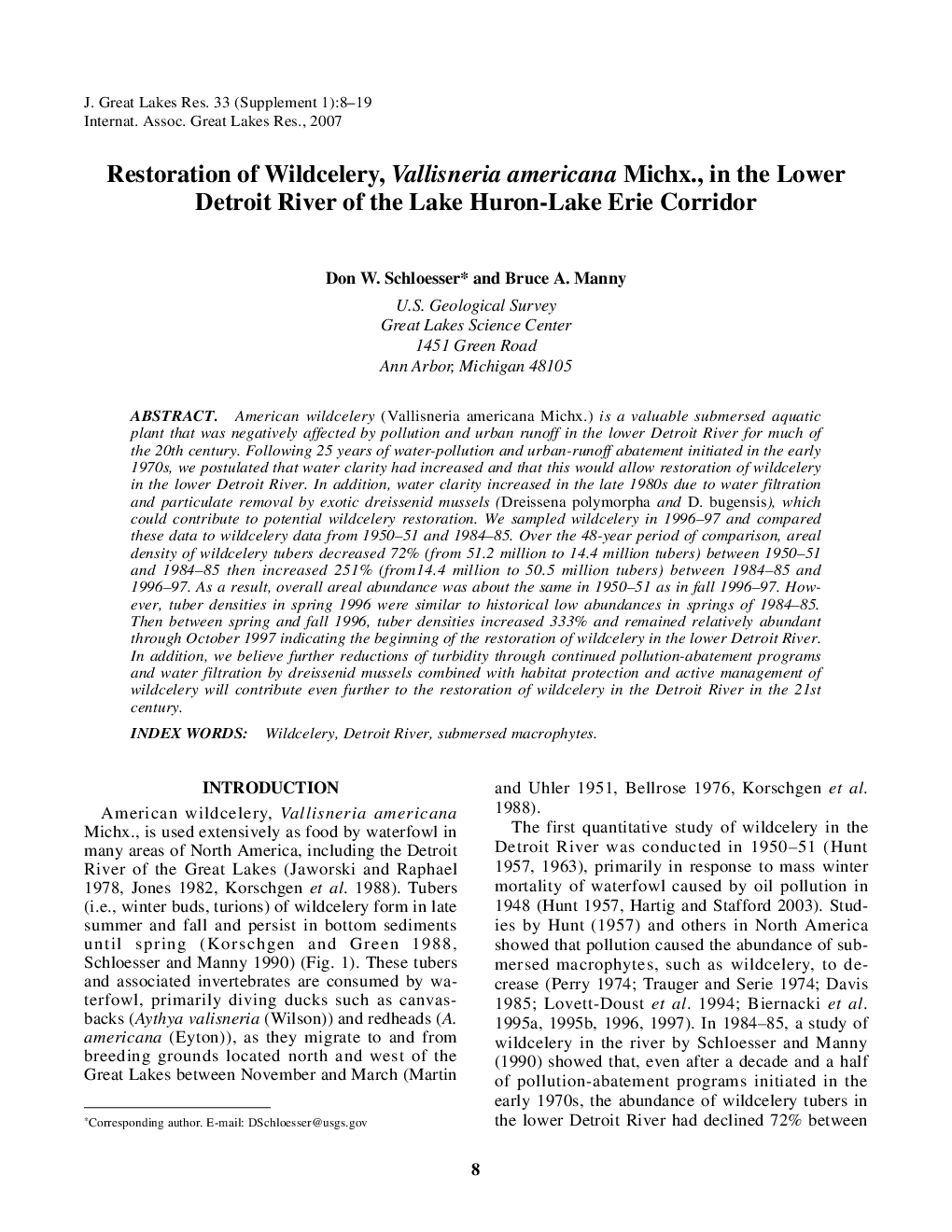| Article ID | Journal | Published Year | Pages | File Type |
|---|---|---|---|---|
| 4398642 | Journal of Great Lakes Research | 2007 | 12 Pages |
Abstract
American wildcelery (Vallisneria americana Michx.) is a valuable submersed aquatic plant that was negatively affected by pollution and urban runoff in the lower Detroit River for much of the 20th century. Following 25 years of water-pollution and urban-runoff abatement initiated in the early 1970s, we postulated that water clarity had increased and that this would allow restoration of wildcelery in the lower Detroit River. In addition, water clarity increased in the late 1980s due to water filtration and particulate removal by exotic dreissenid mussels (Dreissena polymorpha and D. bugensis), which could contribute to potential wildcelery restoration. We sampled wildcelery in 1996-97 and compared these data to wildcelery data from 1950-51 and 1984-85. Over the 48-year period of comparison, areal density of wildcelery tubers decreased 72% (from 51.2 million to 14.4 million tubers) between 1950-51 and 1984-85 then increased 251% (from14.4 million to 50.5 million tubers) between 1984-85 and 1996-97. As a result, overall areal abundance was about the same in 1950-51 as in fall 1996-97. However, tuber densities in spring 1996 were similar to historical low abundances in springs of 1984-85. Then between spring and fall 1996, tuber densities increased 333% and remained relatively abundant through October 1997 indicating the beginning of the restoration of wildcelery in the lower Detroit River. In addition, we believe further reductions of turbidity through continued pollution-abatement programs and water filtration by dreissenid mussels combined with habitat protection and active management of wildcelery will contribute even further to the restoration of wildcelery in the Detroit River in the 21st century.
Keywords
Related Topics
Physical Sciences and Engineering
Earth and Planetary Sciences
Earth and Planetary Sciences (General)
Authors
Don W. Schloesser, Bruce A. Manny,
